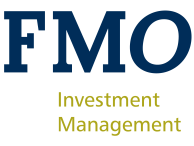Squeezed in the middle
Armenia is a small land-locked country in the Caucasus. It is a rather isolated country given its troubled relationships with two of its main neighbours Azerbaijan and Turkey. In practice this means that 80% of its border is closed. Fortunately, the relationships with its other neighbours are good and the country is supported by its particularly large diaspora. The country, about ¾ of the Netherlands in surface, has approximately 3 million inhabitants (plus appr. 7 million living abroad). Most of them live in the capital Yerevan or in one of the other much smaller cities. The population is young, but many are unemployed and live under the poverty line. Youth unemployment in Armenia is even the highest in the region with ~39% unemployment under age of 25 versus 18% general unemployment in the country. While the private sector mainly consists of micro, small and medium sized enterprises (MSME), making up about 98% of total registered enterprises, these contribute only for ~33% of employment. Lack of access to finance hinders further growth of these businesses and thus the potential for increased employment and the route out of poverty.
Innovation speaks to a new generation
 When Ameriabank started on a new path in 2008, by changing its name and strategy, it chose a path to service its customers in a way which suited its customers best. By doing so it recognized that creating digital access to financial services was a great way of achieving just that. Its strategy spoke to a new type of customer hardly serviced by the financial sector at the time; a much younger customer, below 35. Yet it is the largest portion of the population.
When Ameriabank started on a new path in 2008, by changing its name and strategy, it chose a path to service its customers in a way which suited its customers best. By doing so it recognized that creating digital access to financial services was a great way of achieving just that. Its strategy spoke to a new type of customer hardly serviced by the financial sector at the time; a much younger customer, below 35. Yet it is the largest portion of the population.
So when Ameriabank first took a loan specifically for on-lending to SME and retail customers aged below 35, it was the first bank in the country to really build a strategy focused on this segment of the market. The loans may be used for educational purposes, first time mortgage loans, business start-ups and generally for SME businesses owned by young entrepreneurs. In other words, generally supporting the development of young people by providing access to finance both through traditional channels (branch offices) as well as digital channels (mobile phones, television). Besides unlocking a new segment of the market, it also means that Ameriabank can reach beyond the capital Yerevan, which is already well served by banks while households and businesses in other parts of Armenia have significantly less access to financial services or none at all.
Coincidentally, the bank itself has become a reflection of the Armenian population and employs now almost 700 staff, out of which 2/3 is younger than 35 years and over half is female.
The FMO Loan
Ameriabank has been a client of FMO since 2009 and has since then applied for and received several loans. Various funds we advise for are currently participating in a number of loans to Ameriabank.


